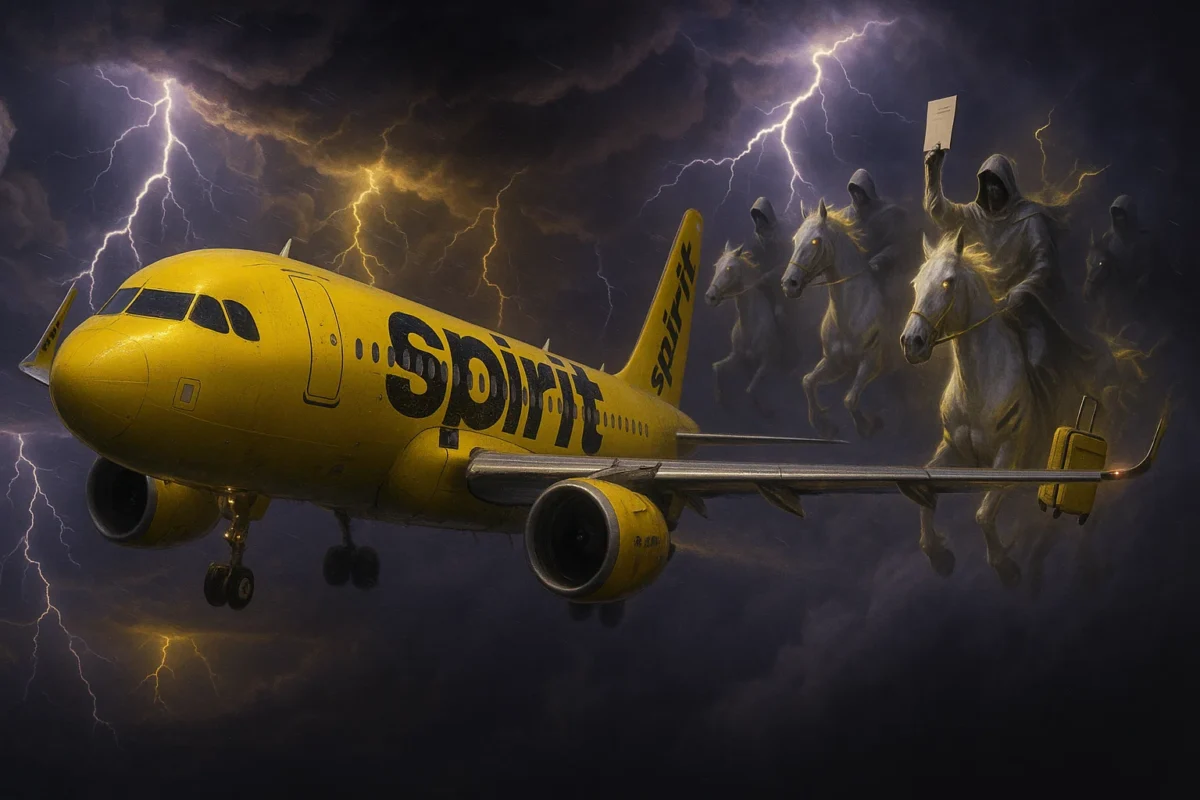DANIA BEACH, FL — First trumpet sounded somewhere between a gate change and a “courtesy reminder” that personal items must fit under the seat in front of you.
Second trumpet was the notification that shares of Spirit Airlines were doing a “final destination” routine on Wall Street.
Then came a third trumpet: a push alert that the airline had issued a going-concern warning mere months after emerging from restructuring.
And the fourth? A gentle chime inviting you to sign up for the co-brand credit card while there’s still an airline to co-brand with.
Welcome to the Budget Airline Apocalypse, brought to you by basic economy and a carry-on that definitely won’t fit.
Yellow Horsemen on Final Approach
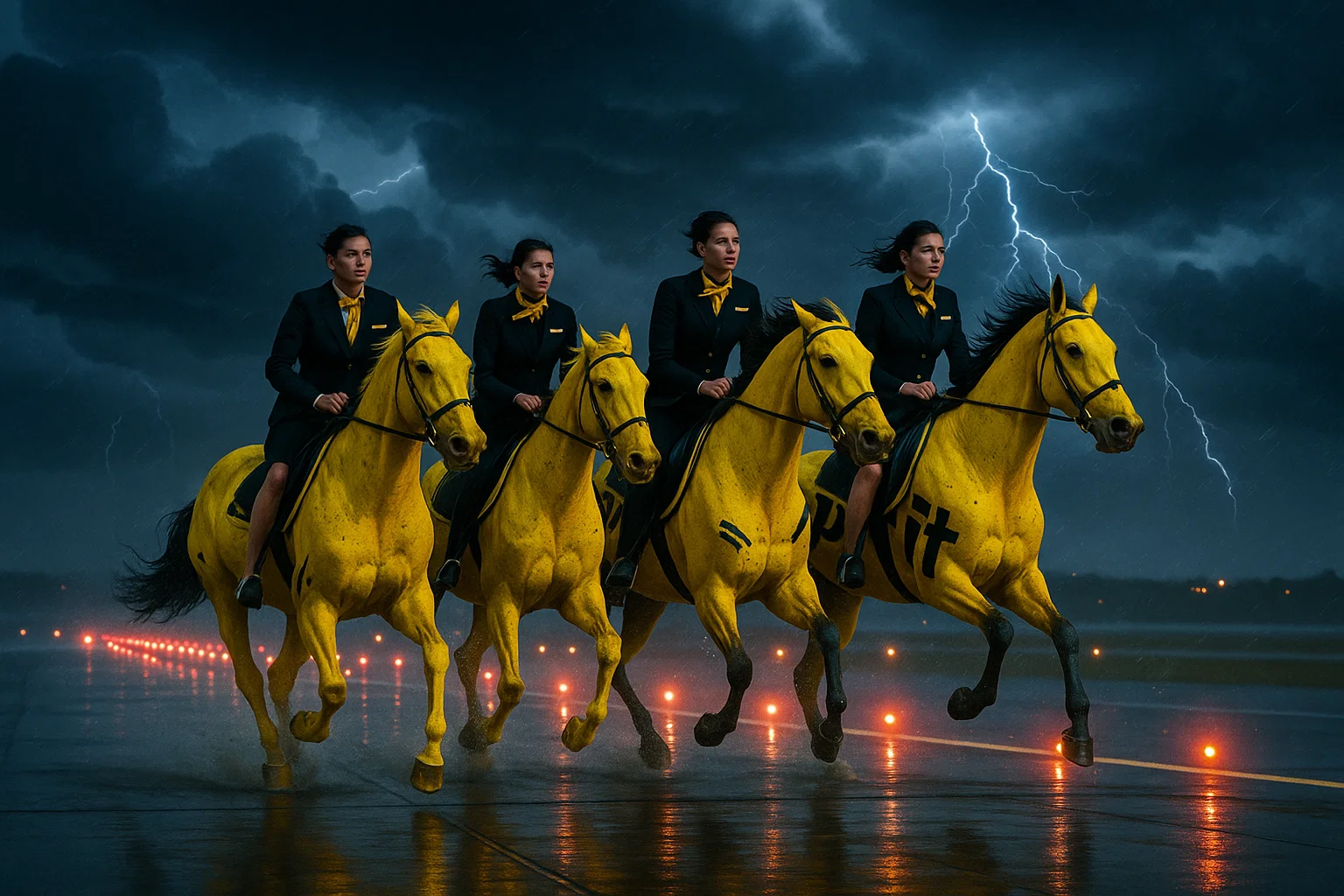
On an otherwise normal August afternoon, the clouds split and a blinding yellow appeared, a harbinger with winglets. In plain corporate scripture, Spirit cautioned that there is “substantial doubt” about its ability to keep existing over the next year, a kind of Ecclesiastes written in 8-K font.
The Four Yellow Riders
- The yellow horseman of Constrained Liquidity unsheathed a boarding pass.
- The yellow horseman of Credit Card Processor Collateral jingled a sack of refundable authorizations.
- The yellow horseman of Fare Wars revved a single CFM engine with two missing fan blades.
- The yellow horseman of Load Factor took a headcount and charged a fee for it.
It’s not just symbolism, the numbers themselves burst forth like locusts. The filing landed, traders panicked, and the stock took a roller bag down the jet bridge tumble, as Axios and CBS News tallied the drop.
Over at Skift, the headline read like a final approach checklist to Chapter 22: survive with new funding or don’t. The faithful clutched their $9 Fare Club cards, whispering beatitudes for free water cups and aisle seats that would never come.
The Day the Fares Died
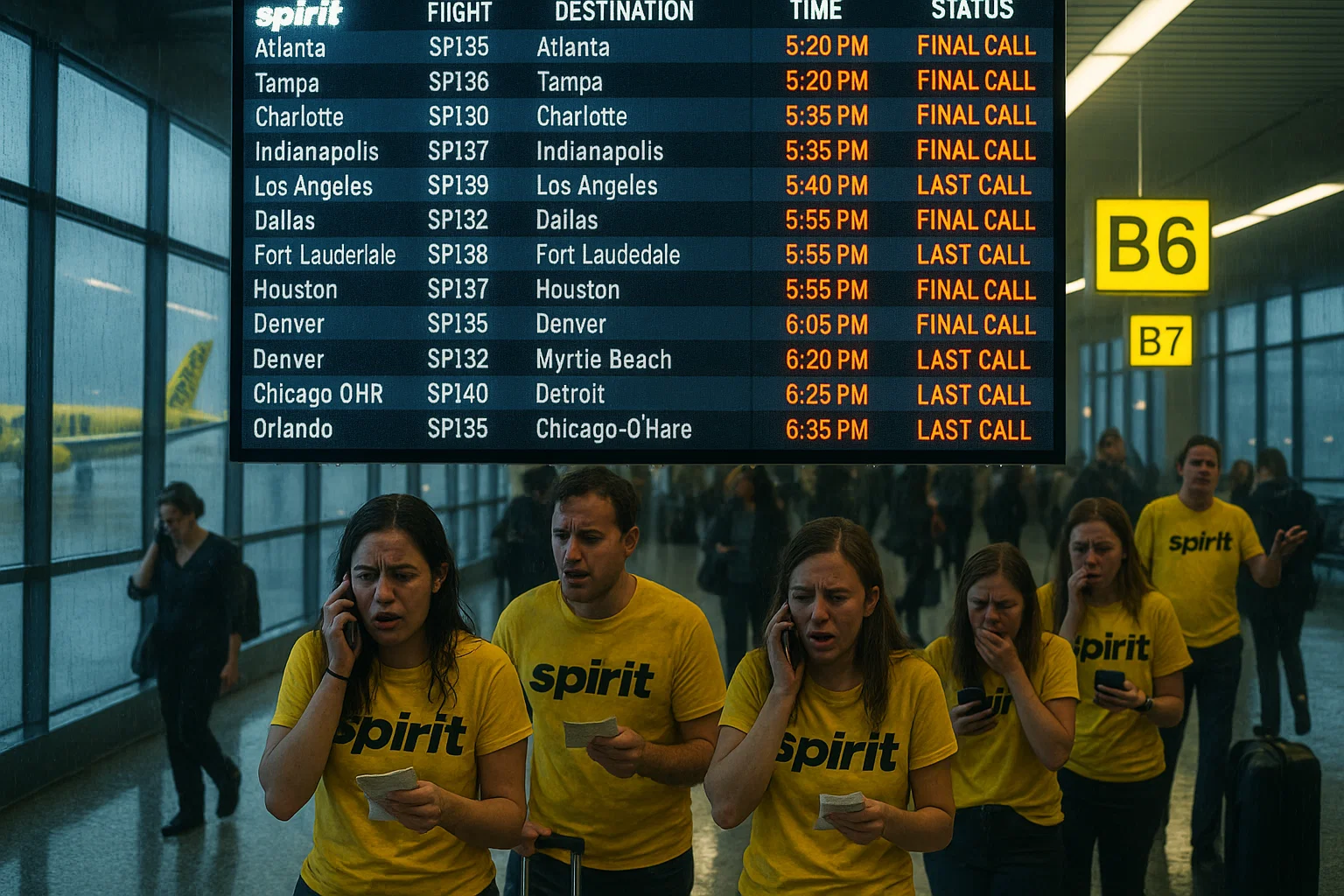
A Departure Board of Doom
Gate B-14, the site of many a spirited (sorry) Zone 3 scrum, became the vigil. On the departure board, something unholy happened: in place of “On Time,” a new line item called “Going Concern” flickered in amber.
Analysts Without Comforting Words
Analysts explained that Spirit’s warning wasn’t a coupon for the apocalypse, it was the apocalypse, but with blackout dates.
Even the airline’s own restructuring victory lap from March suddenly read like a foreshadowing inscription: the company had “emerged better positioned” to confront the exact cliff it was now describing so earnestly.
Fare Model Friction
In the concourse, passengers debated whether Spirit’s model could survive a world where fares were being dragged down by too many seats chasing too few spontaneous trips to Myrtle Beach.
The day’s tickers made a propulsive chorus: going-concern, share plunge, funding or else. On the PA, a voice apologized for the delay and assured everyone that their patience would be rewarded with a limited-time opportunity to purchase “Boarding Group: Revelations” for $39.99 plus tax.
Safety Demos Replaced with Bankruptcy Briefings
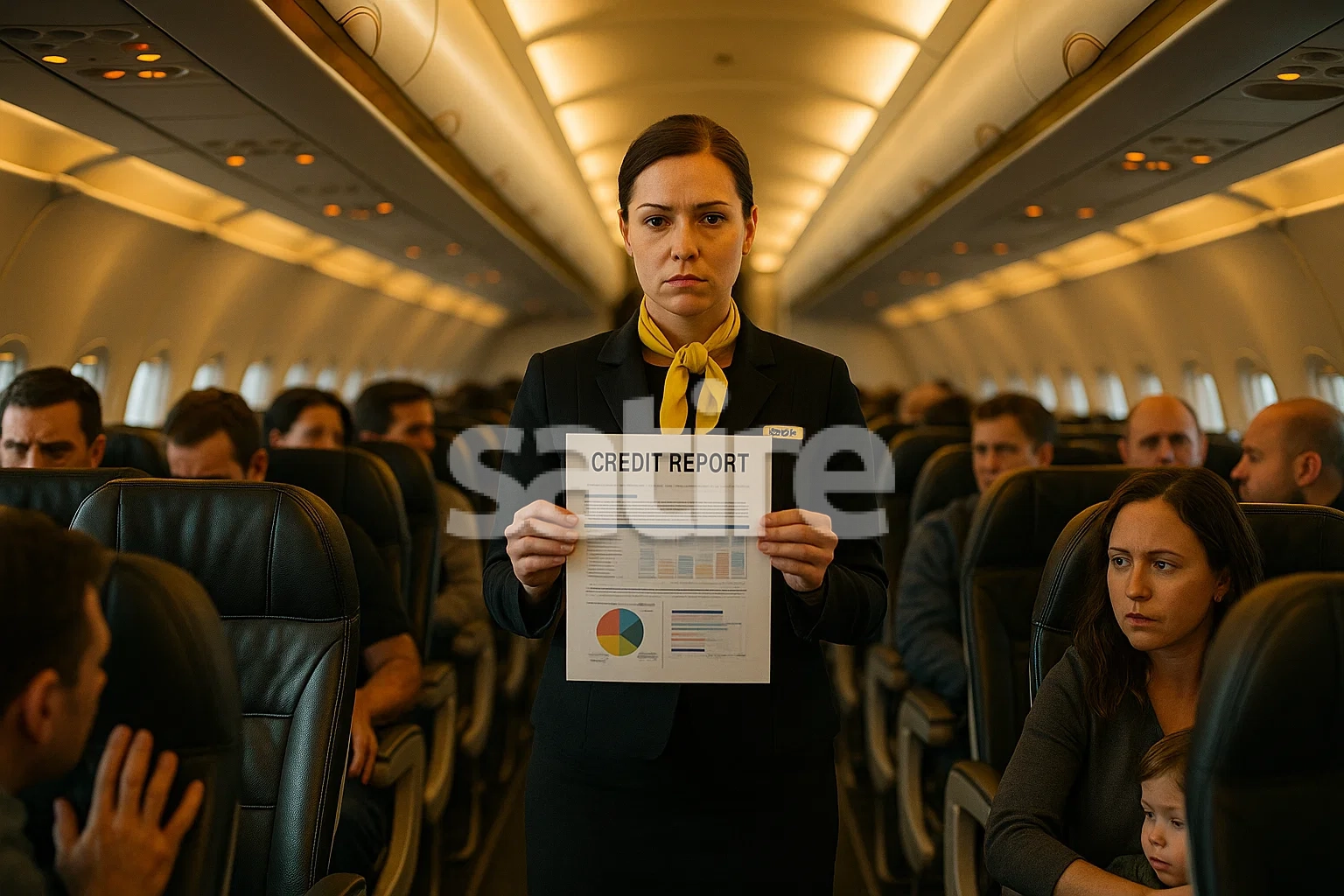
Brace, Brace
“In the event of a liquidity event, a mask of plausible optimism will drop from the ceiling. Secure your own narrative before assisting others.”
The cabin turned to look at the flight attendants, veterans of turbulence and customers who bring their own tuna melts, who had started receiving a different kind of preflight pep talk.
Labor communications rolled in advising crew to take stock of their finances, which is corporate for “brace, brace.”
Meanwhile, the CEO went on a mini-tour of optimism that travel blogs couldn’t stop side-eyeing, with headlines like, “Spirit CEO thinks it’s fine, flight attendants warned it’s not,” courtesy of Live and Let’s Fly.
Rumor Cart at Altitude
In another corner of the terminal internet, a frequent flyer whisper network debated whether “save your receipts” included half-eaten packs of Biscoffs.
A sharp-elbowed chorus from mileage land urged crews not to be shy about retrieving valuables from the bin, as View from the Wing distilled a rumor mill that felt more like an in-cabin rumor cart.
The result: a surreal cabin briefing that toggled between “exits are here, here, and here” and “an emergency fund is here, here, and here.”
Yard Sale at 30,000 Feet
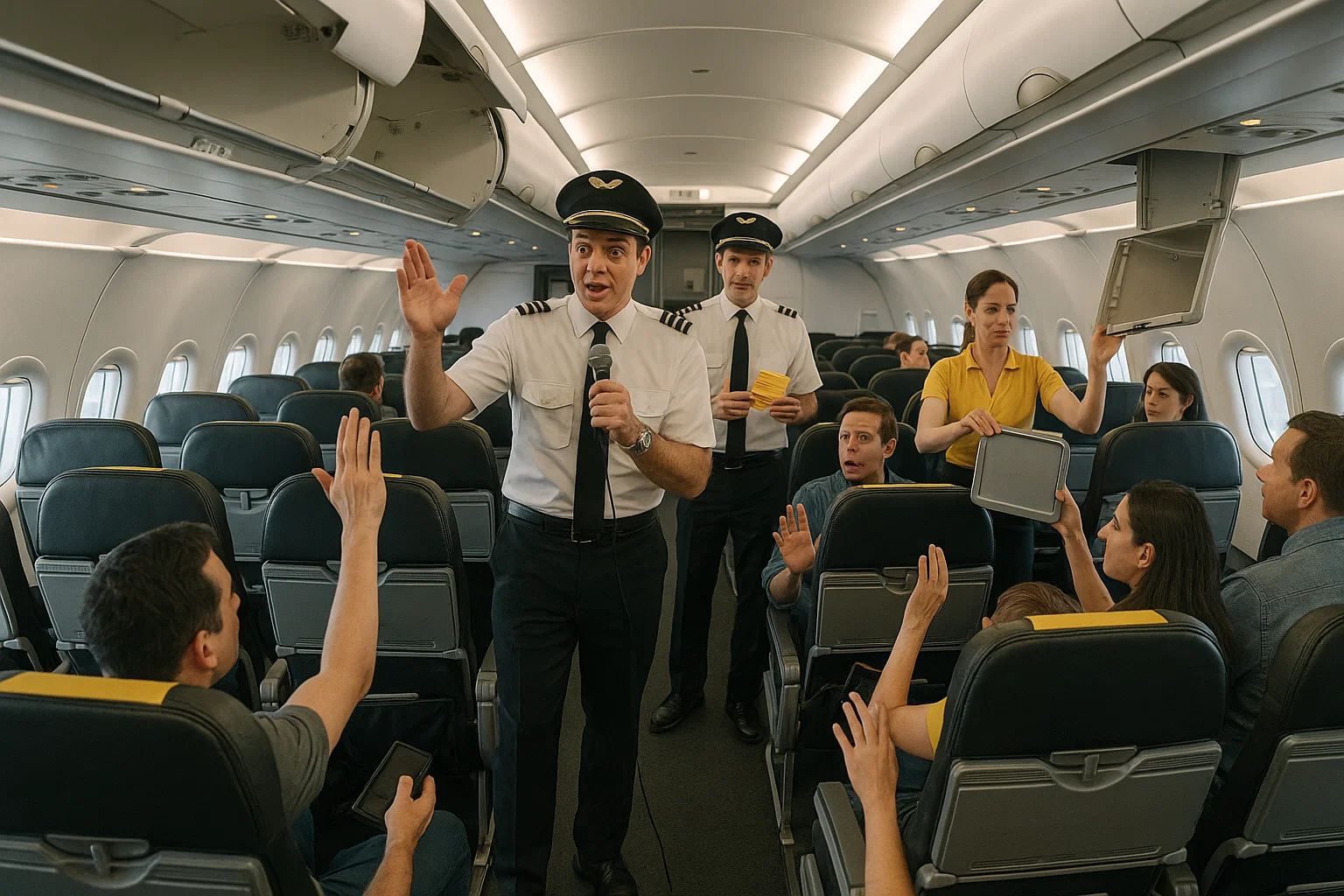
Everything Must Go
The filing was a treasure map of things that could be sold, monetized, collateralized, or otherwise turned into an artisanal liquidity cocktail.
Reports noted the credit-card processor asking for more collateral on renewals, the kind of sentence that makes treasurers stare into the distance like a pilot watching a thunderhead form.
As Reuters and Skift laid out, everything was on the table: aircraft sales, real-estate nibbles, even excess gate capacity… basically a stoop sale, but the stoop is an entire airline.
Auction, Now Boarding
Picture it: at cruising altitude, a calm voice announces, “Ladies and gentlemen, we’ll be commencing our in-flight asset monetization. First up is Overhead Bin 12L, lightly used, one previous owner, starting bid at 10,000 Free Spirit miles whose value may fluctuate with market conditions.”
A polite round of applause rises from Row 27, where someone is already listing a tray table on Facebook Marketplace. Out the window, the sun sets on a world that suddenly feels like an estate sale with winglets.
Final Boarding for the Faithful
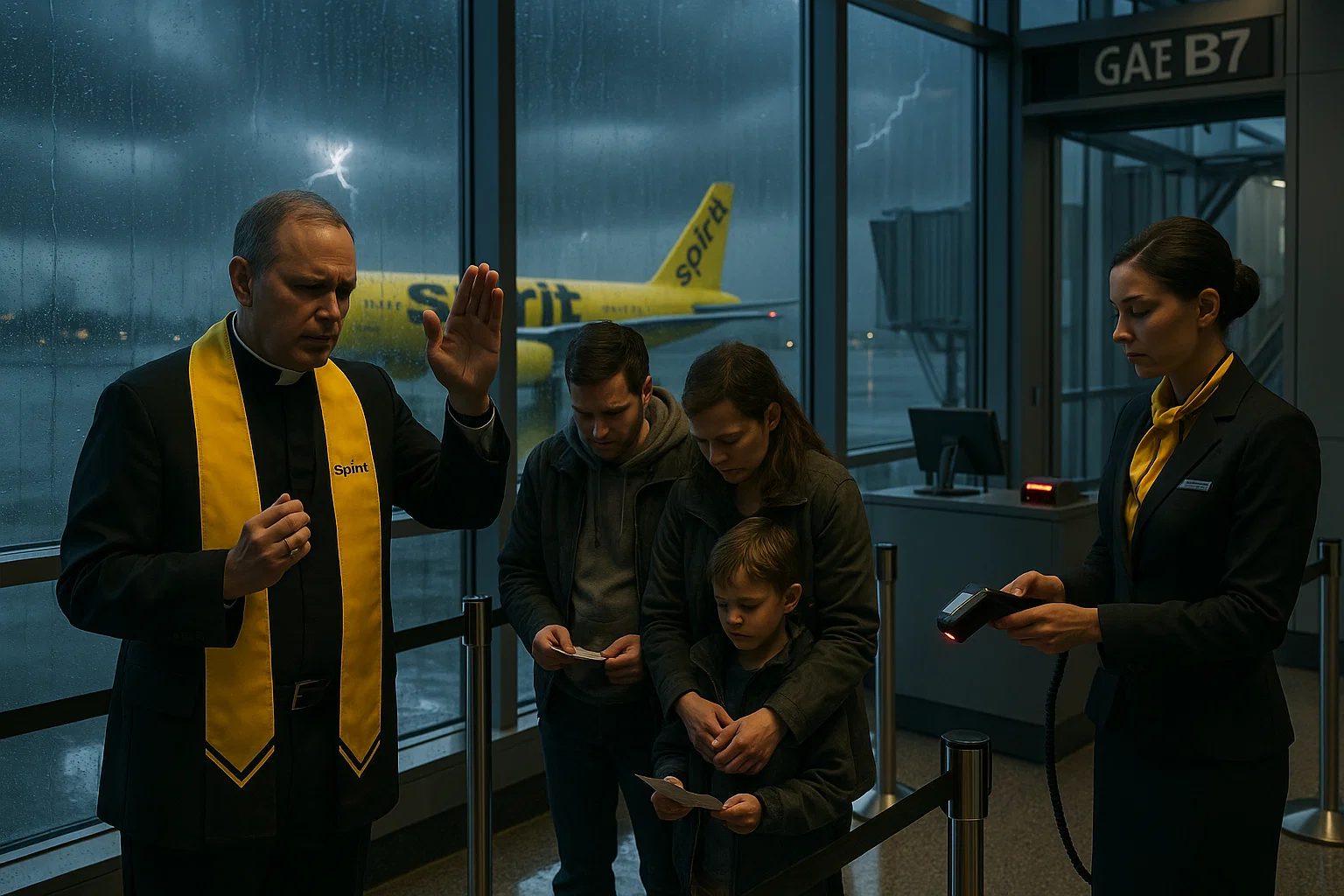
Gate C-7, Last Rites
At Gate C-7, a somber ceremony begins. A Spirit-branded chaplain offers a blessing for all who chose the window and the $16 seat-assignment surcharge.
A gate agent, wearing the serene smile of one who has announced “We’re just waiting on a flight crew” more times than the Book of Numbers has numbers, scans boarding passes toward a future that might be a terminal or a terminus.
The public address system offers scripture: “At this time, we invite all mourners, families with small carry-ons, and members of the $9 Fare Club to board for one last rodeo.”
Folklore in Yellow
As the industry observers keep tally, AP recording the warning, finance pages refreshing like departure boards at a hub during a thunderstorm, devotees of the yellow brand trade folklore.
They recall the time a gate agent fused three separate boarding groups into one chaotic community theater project.
They remember the legendary $18 fare that became $117 after the “everything that makes the plane work” surcharge.
And they clutch their last drink coupons like relics from a vanished age.
After the Last Landing
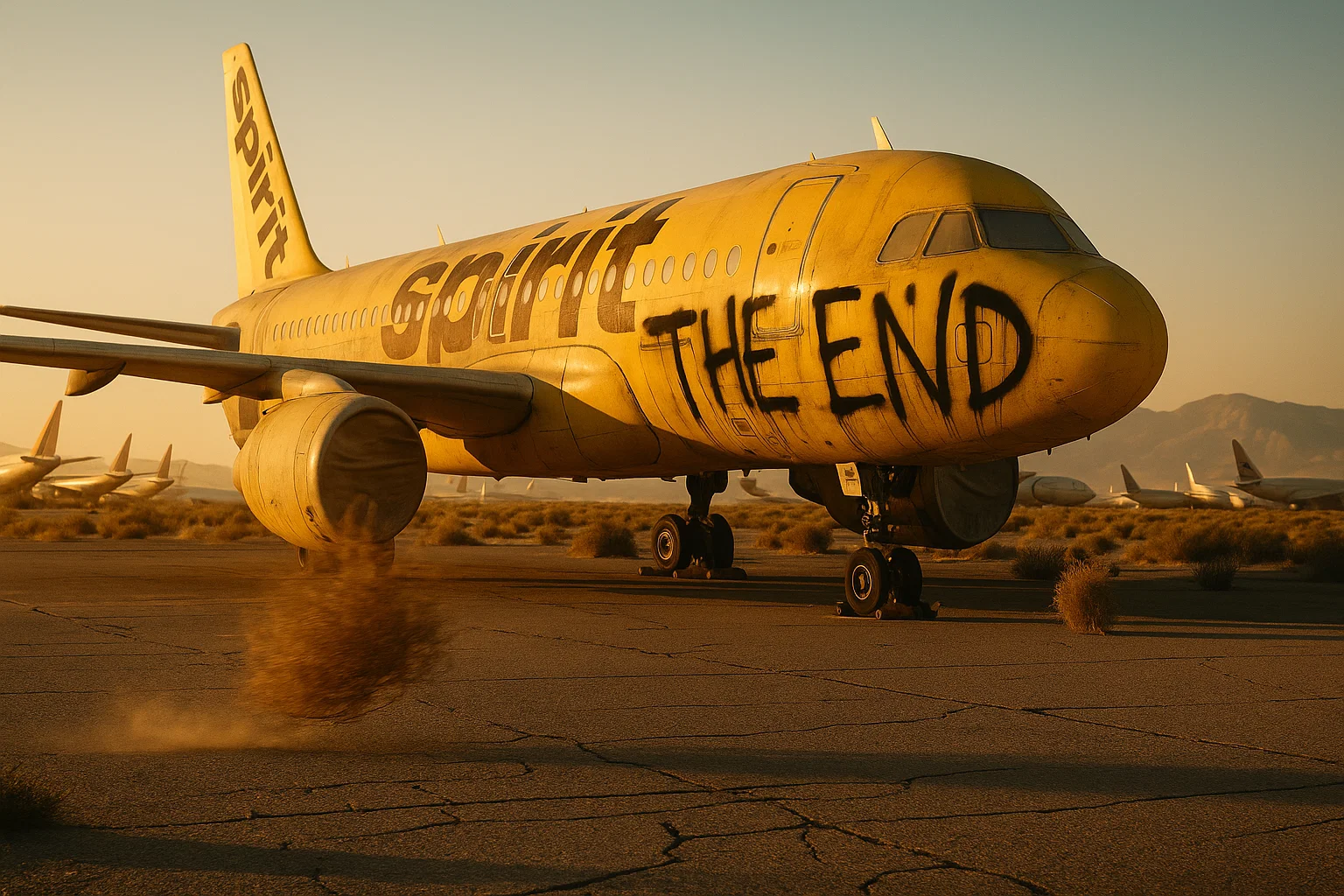
Some apocalypses are loud. Others are a gentle taxi to a remote stand, a sigh of hydraulics, and a ground crew that shrugs in unison.
In the imagined afterworld, the yellow planes sit neatly in the desert like high-vis tombstones.
A dusty placard reads, “Emergent from restructuring on March 12, 2025; loved by many; survived on vibes.” The company’s own celebratory announcement, how it “emerged better positioned”, becomes an artifact in the museum gift shop, right next to the $9 Fare Club flat-brim hat.
Lessons in the Wreckage
But ghosts haunt airports, and this one would haunt the industry discourse.
Business sites would publish retrospectives debating whether ultra-low-cost carriers can outrun fare compression forever. Think pieces would argue that when every seat is cheap, somebody gets left holding the engine.
From the consumer angle, writers would note that when you cut away enough frills, you eventually discover you’ve whittled into bone.
Meanwhile, a final, knowing piece in the travel press points out that when a budget brand dies, the budget traveler’s bill doesn’t, prices go somewhere, and their destination is usually your cart total.
Appendix A: Corporate Revelations (Because the Lawyers Will Read This)
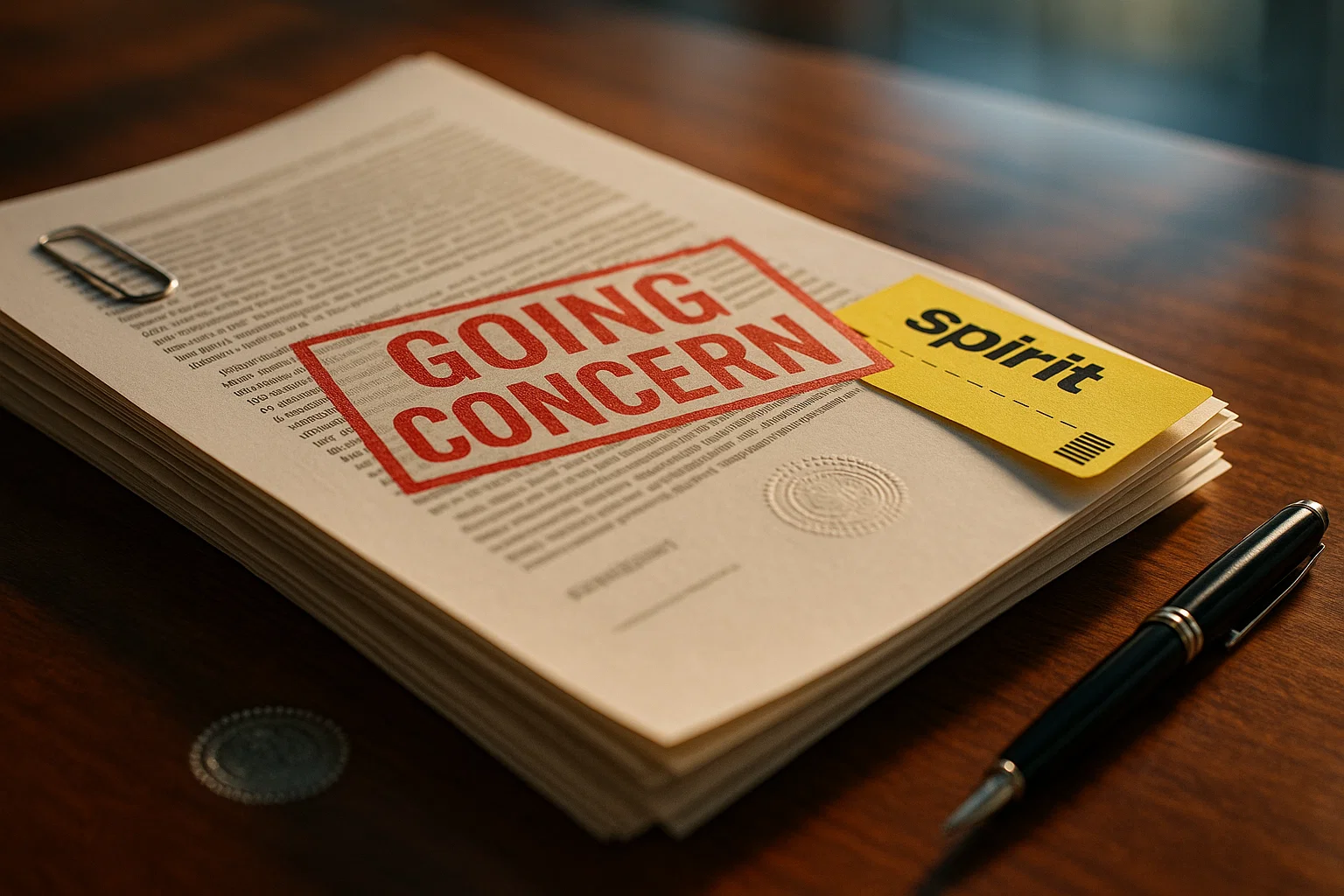
Where to Read the Scrolls
For those who collect footnotes like lounge day passes, the canonical texts of the apocalypse are right where you’d expect: in the investor relations scrolls and wire services that still smell faintly of toner.
Spirit’s SEC filings sit under a polite “Financials” tab as if they aren’t screaming, right here, investor relations, and, if you like your lamb’s seals broken in PDF, behold the scroll.
If you want the CliffsNotes of doom, the wire recaps are tidy and merciless: Reuters provides the cleanest stone tablet; Skift supplies the industry lament; AP ensures your aunt on Facebook can follow, too.
Cast and Scripted Lines
There are characters in this drama, executives who must do optimism, analysts who must do arithmetic, bloggers who must do snark, each trapped in a cabin where the seat pitch is workshopped in PowerPoint.
They will pose for careful quotes, issue prim statements, and then check the price of jet fuel like it’s a mood ring.
Expect “transformation” to be announced enough times to transform the word itself into a warm bath.
And we will read about it, in airport bars and group chats, trying to square the clean lines of a press release with the messy chorus of a concourse where the floor is sticky with spilled optimism.
Epilogue: Four Boarding Groups of the Apocalypse
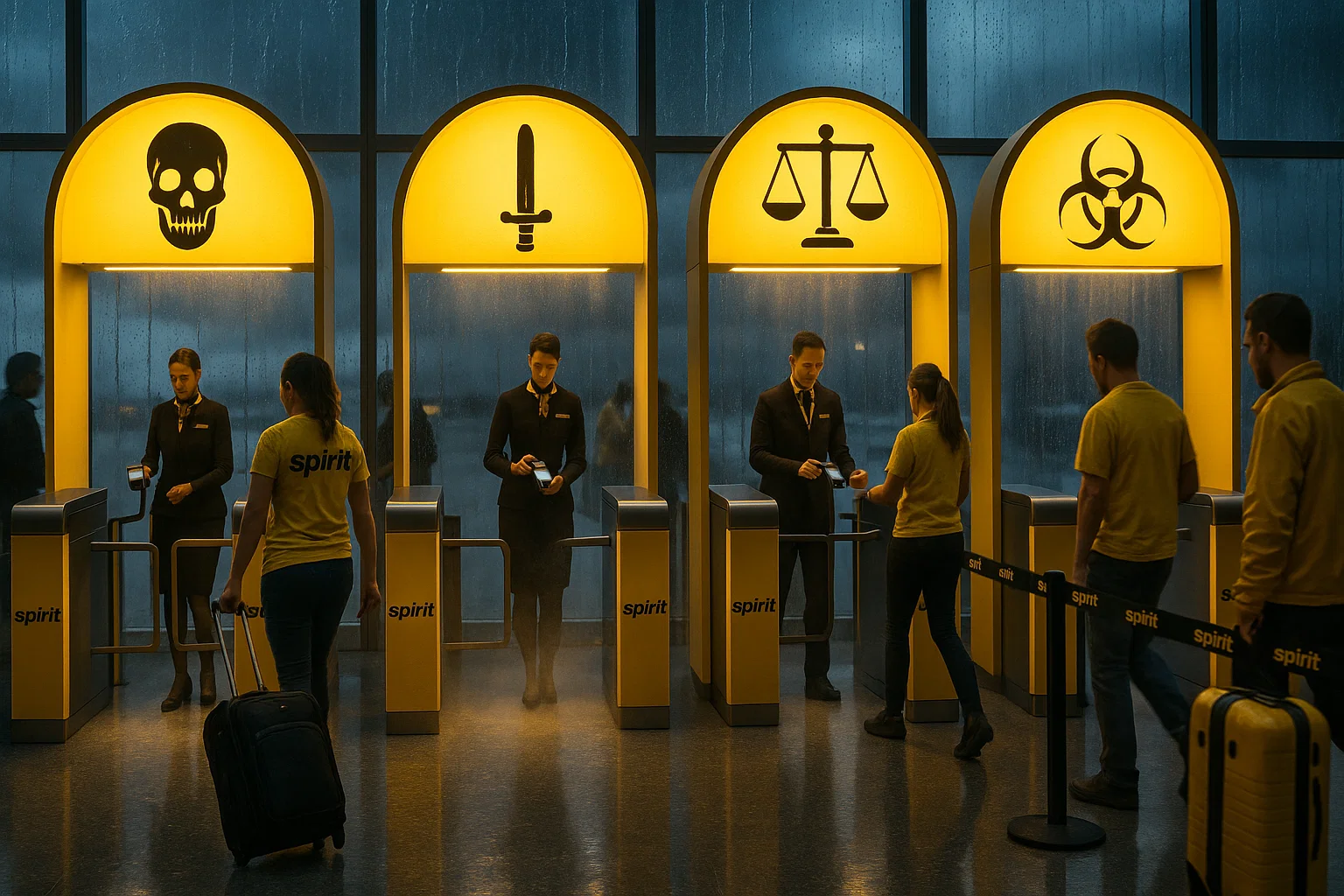
Group 1: The Loyalists
Group 1 is the loyalists. They wore the yellow like face paint and could recite the baggage policy by heart. They will tell you, eyes shining, that Spirit democratized the sky, that you could build a weekend around a fare and a dream, that the critics never understood the joy of paying à la carte for a human experience. These travelers will keep flying until the lights go out and the jet bridge retracts with a hiss you can feel in your molars.
Group 2: The Rubberneckers
Group 2 is the rubberneckers. They preferred to fly legacy carriers but kept a Spirit story like a shark tooth on a necklace: a boarding pass that turned to vapor at the gate, a conquistador’s quest for a seat assignment, a flight that spontaneously became performance art. They’ll watch this finale from the bar, narrating it into Reels for an audience of coworkers who should be boarding somewhere else right now.
Group 3: The Industry
Group 3 is the industry. They will make a model. It will have arrows and colors and numbers that add and subtract and multiply but never fully divide the path of an airline that tried to offer the sky like an impulse buy at the grocery checkout.
Expect them to point to liquidity alarms, capacity hangovers, and customers who demand more legroom at less than cost. Then come the TED Talks about how loyalty programs are the real engines now and how you can’t power a fleet on vibes alone.
Group 4: Everyone Else
Group 4 is everyone else: the stand-by gods, the stranded students, the aunties dragging roller bags that could house a medium-sized dog, the families calculating whether a $39 seat fee multiplied by four is still cheaper than driving. They didn’t come for a parable, but they got one anyway: everything ends, even the party where the drinks were cheap and you had to open the can yourself.
Apocalypse Pending…
If this all feels theatrical, that’s because it is, a morality play with ancillary fees.
Somewhere, a gate agent still says, “We thank you for choosing Spirit,” and means it, because a human said it.
Elsewhere, a pilot taxis a yellow fuselage toward an open sky and hopes the runway is long enough.
Across the aisle, a passenger tries to shove a too-big bag into a too-small space and swears that physics is a suggestion.
And somewhere, three horsemen chuckle, and the fourth holds up a laminated card that reads:
“In case of apocalypse, return to The Takeoff Nap for more.”
- If you’re curious about how airlines are playing games with frequent flyer programs, check out Airlines Through Fooling Around With Frequent Flyer Headaches for a deep dive into the chaos.
- Discover how Southwest Airlines is changing the game with assigned seating in Southwest Airlines Betrays the Common Flyer: Assigned Seats Usher in Era of Airborne Aristocracy! and what it means for the everyday traveler.

